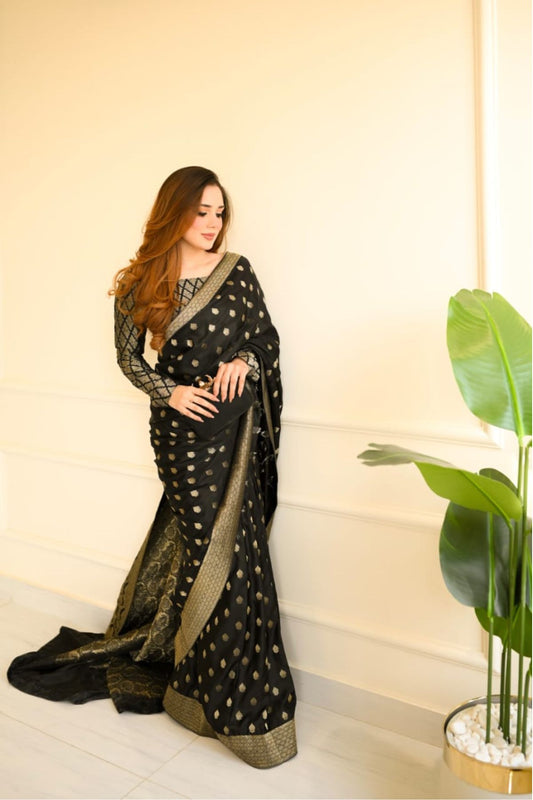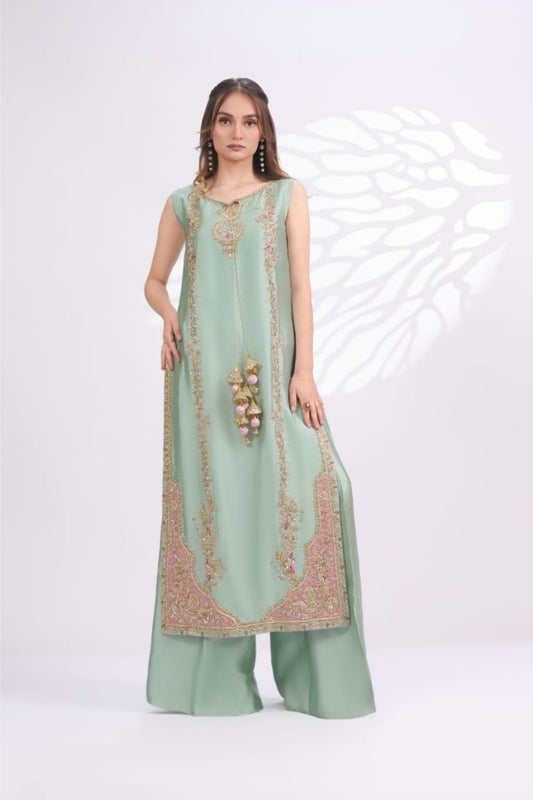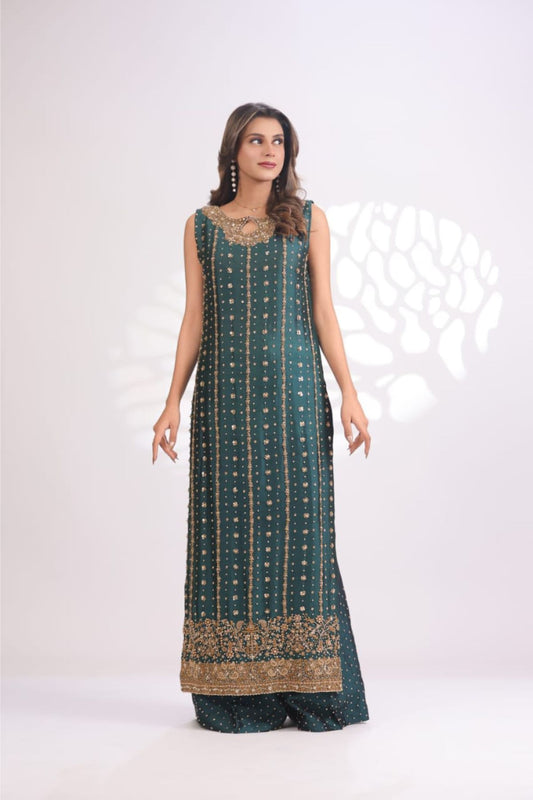Formal Wear Etiquette: Do’s and Don’ts for Corporate Events
In the corporate world, your attire speaks volumes before you even utter a word. Understanding formal wear etiquette is essential for anyone looking to make a positive impression at corporate events.
Formal events often have specific dress codes, such as black tie, business formal, or cocktail attire. Each of these requires a particular style of formal dresses that communicates your understanding of the occasion's gravity. Being aware of these dress codes and adhering to them can set you apart as someone who respects the corporate culture and understands the nuances of professional settings.
Whether it's a gala, a networking luncheon, or a formal meeting, knowing what to wear can boost your confidence and help you focus on your performance rather than worrying about your appearance.
The Importance of Dressing Appropriately for Corporate Events
Dressing appropriately for corporate events is crucial for several reasons. Firstly, it reflects your professionalism and your respect for the organization hosting the event. Secondly, the right attire can significantly impact how others perceive you. In a corporate setting, first impressions matter immensely.
Dressing well not only boosts your confidence but also conveys competence, attention to detail, and respect for the business culture. Choosing a semi-formal outfit, for example, can strike the perfect balance between professionalism and style at many corporate events. This can influence networking opportunities, career advancements, and the overall perception of your personal brand. Moreover, dressing appropriately ensures that you fit seamlessly into the event's environment, allowing you to focus on the purpose of the event, whether it's networking, learning, or celebrating achievements.
Do’s of Formal Wear for Corporate Events
- Understand the Dress Code: Always confirm the dress code mentioned in the invitation.
- Opt for Quality Fabrics: Invest in quality fabrics that not only fit well but also offer comfort.
- Tailored Fit: Ensure your attire is tailored to your body type. A well-fitted suit or stylish party wear ensemble dress can drastically enhance your overall appearance and confidence.
- Neutral Colors: Stick to neutral or classic colors such as navy, black, gray, or white. These colors are versatile and suitable for most formal occasions.
- Polished Footwear: Clean and polished shoes are a must. Your footwear should complement your outfit and adhere to the formality of the event.
By following these guidelines, you can ensure that your appearance aligns with professional expectations, helping you to stand out in a positive way at any corporate event.
Don’ts of Formal Wear for Corporate Events
- Avoid Overdressing or Undressing: Avoid wearing overly extravagant attire that might overshadow the purpose of the event, just as much as you should avoid being too casual.
- Steer Clear of Flashy Accessories: While accessories can enhance your outfit, overly flashy or oversized accessories can be distracting and may not align with the corporate culture.
- Don’t Ignore Grooming: Personal grooming plays a crucial role in formal wear etiquette. Unkempt hair, chipped nail polish, or a scruffy beard can detract from an otherwise polished look.
- Avoid Loud Colors and Patterns: Bright colors and bold patterns can be distracting in a formal setting. Stick to subtle, classic patterns if you choose to incorporate them into your outfit.
- Don't Forget the Details: Ensure your attire is free of wrinkles, stains, or missing buttons. These small details can affect the perception of your professionalism.
By adhering to these don’ts, you demonstrate your awareness and respect for the event's formality, making you a more effective participant in corporate gatherings.
Choosing the Right Attire: Men vs. Women
When selecting the right attire for corporate events, men and women have distinct considerations that need to be taken into account.
Men’s Attire:
- Suits: A classic, well-fitted suit in navy or charcoal is often the best choice. Pair it with a crisp white or light blue dress shirt.
- Ties and Pocket Squares: Opt for a conservative tie and a matching pocket square to add a touch of elegance.
- Footwear: Black or brown leather shoes should be clean and polished.
Women’s Attire:
- Dresses/Suits: A tailored dress or a smart pantsuit in a neutral color works well for most corporate events.
- Blouses and Skirts: If opting for separates, ensure the blouse is not too revealing and the skirt is knee-length or longer.
- Footwear: Closed-toe heels or flats in a neutral color are ideal choices.
By understanding these gender-specific nuances, you can select an outfit that not only meets the dress code but also reflects your personal style and professionalism.
Accessorizing Your Formal Outfit
Accessories can elevate your formal wear, adding a touch of personality and sophistication.
For Men:
- Watches: A classic watch can make a statement. Choose a design that's understated yet elegant.
- Cufflinks: If wearing a dress shirt with French cuffs, select simple, tasteful cufflinks that complement your attire.
- Belts and Ties: Ensure your belt matches your shoes, and choose a conservative tie that complements your outfit.
For Women:
- Jewelry: Opt for minimalistic jewelry. A simple necklace, stud earrings, or a delicate bracelet can enhance your look.
- Handbags: A small, elegant handbag or clutch in a neutral color is both practical and stylish.
- Scarves and Belts: Use these to add a subtle touch of color or texture, ensuring they don't clash with your overall outfit.
- Women’s Bifocal Sunglasses: If your event is during the day or outdoors, consider stylish women's bifocal sunglasses. They offer both elegance and functionality, allowing you to read and protect your eyes without compromising on style.
By choosing the right accessories, you can refine your appearance, showcasing attention to detail and style without compromising professionalism.
Tips for Feeling Confident in Formal Wear
Feeling confident in your formal attire can transform your experience at corporate events, allowing you to focus on engaging with others and making meaningful connections.
- Practice Wearing Your Outfit: Before the event, wear your complete outfit to ensure comfort and familiarity.
- Focus On posture: Stand tall with your shoulders back, conveying confidence and authority.
- Prepare Mentally: Prepare mentally by reminding yourself of your strengths and the value you bring to the event.
- Embrace Your Unique Style: While adhering to the dress code, incorporate elements that reflect your personal style. This can boost your confidence and help you feel more comfortable and authentic.
By implementing these tips, you can ensure that your formal wear not only looks good but also helps you feel confident and self-assured.
How to adapt formal wear for different corporate cultures
Corporate cultures vary widely, and understanding how to adapt your formal wear to fit these nuances is crucial for making the right impression.
- Research the Company: Before attending an event, research the company's culture. Look for clues in their marketing materials, social media presence, or through direct inquiries with current employees.
- Consider Industry Standards: Different industries have varying expectations when it comes to formal wear. For example, finance and law sectors often lean towards more traditional attire, while tech companies might embrace a slightly more relaxed approach.
- Observe and Learn: At initial events, observe what others are wearing and adapt your attire for future occasions. This helps you blend in while still maintaining your personal style.
- Ask for Guidance: They can provide insights into what's considered appropriate and what's not.
- Be Flexible: Flexibility ensures you're always appropriately dressed, regardless of any unexpected changes in the event's setting or atmosphere.
By understanding and adapting to different corporate cultures, you can ensure your formal wear is always appropriate, helping you to connect more effectively with others and achieve your professional goals.
Conclusion
Mastering formal wear etiquette means understanding the subtleties of professional attire and how it shapes your presence at corporate events. By following the do’s and don’ts, selecting the right outfit, accessorizing appropriately, and avoiding common mistakes, you ensure your appearance meets the event’s expectations.
Your attire reflects your professionalism and respect for corporate culture, helping you present yourself with confidence and authority, and leave a lasting impression on colleagues, clients, and industry leaders. The right attire can open doors to new opportunities, foster meaningful connections, and highlight your commitment to excellence.






